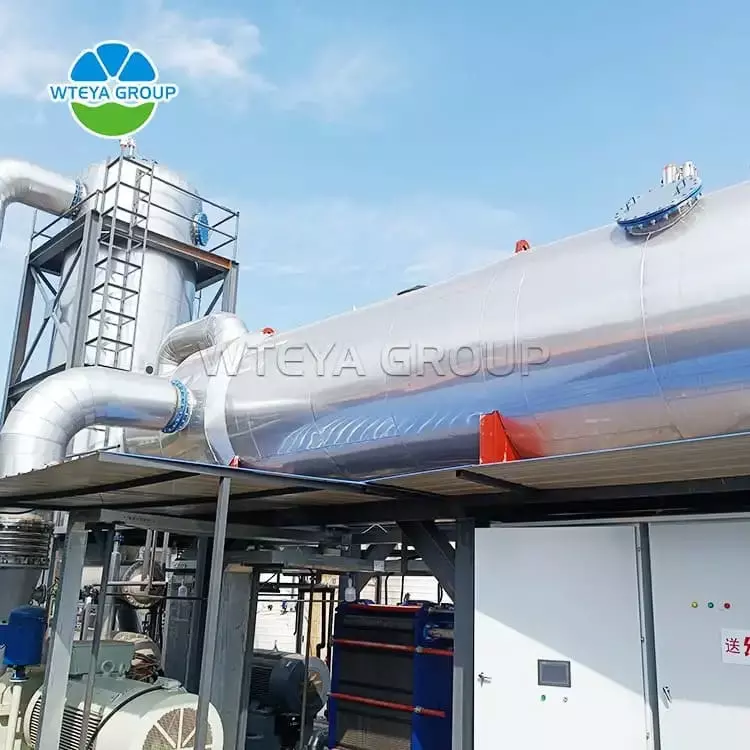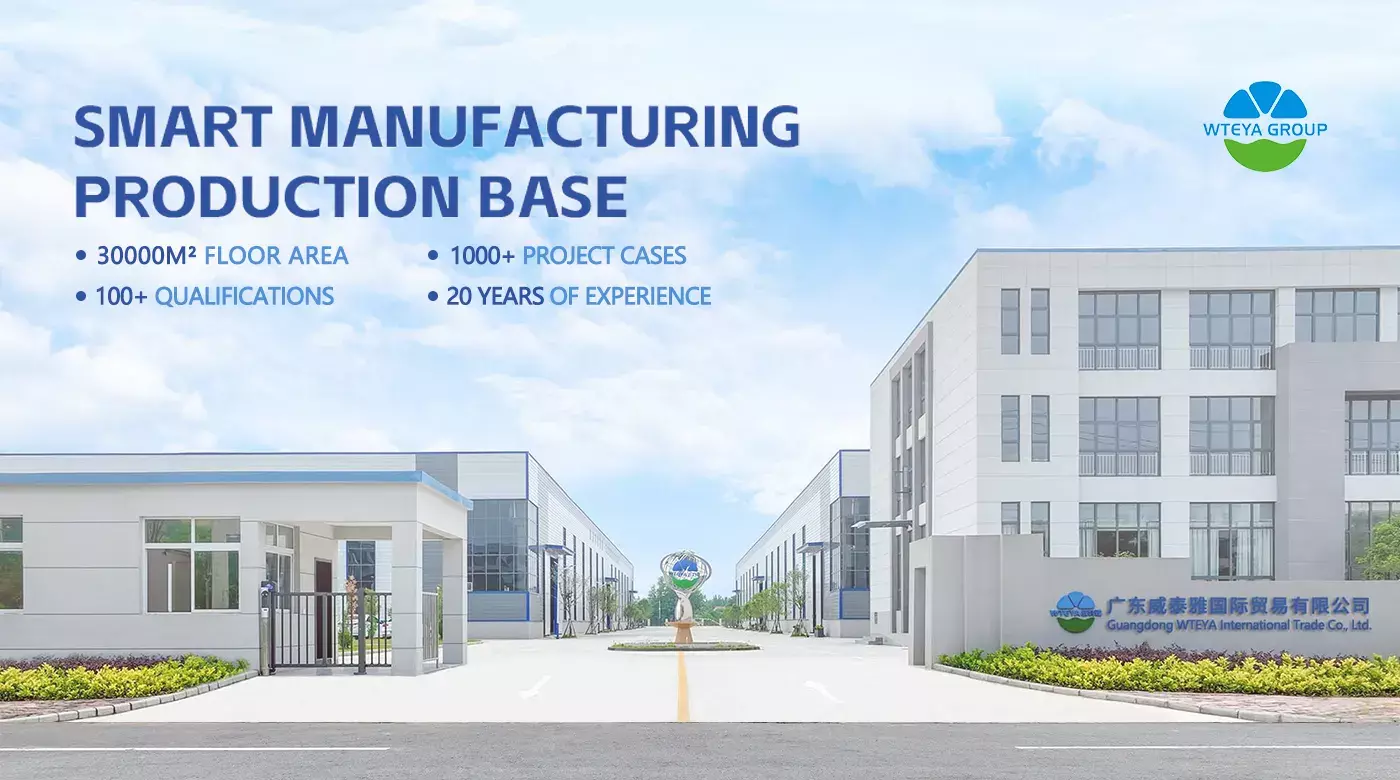Forced Circulation Evaporator: Working Principle
A forced circulation evaporator consists of four main components: a separator, a heater, a forced circulation pump, and a steam compressor. It is specially designed for the evaporation of high-concentration, high-viscosity, scaling-prone, and fouling-sensitive liquids, and is particularly suitable for materials containing particles or sensitive to heat. As a high-efficiency and energy-saving concentration and crystallization system, the forced circulation evaporator developed by WTEYA adopts internationally advanced evaporation technology. It utilizes low-temperature and low-pressure processes and clean energy sources to generate steam and separate moisture from the medium, making it a next-generation alternative to traditional evaporators. The system is engineered for superior performance, offering high liquid velocity, rapid evaporation, anti-scaling functionality, stable operation, high efficiency, and low steam consumption.
Types of Forced Circulation Evaporators
Forced circulation evaporators can be categorized based on the number of effects as:
-
Single-effect evaporator
-
Double-effect evaporator
-
Triple-effect evaporator
-
Multi-effect evaporator
Additionally, they can be flexibly combined with rising film evaporators or external circulation evaporators to form a variety of hybrid process configurations.

Working Principle
The forced circulation evaporator uses an external circulation pump to force liquid through the system, increasing the fluid velocity. The liquid is heated in the tubes to a superheated state, beyond its atmospheric boiling point. Upon entering the separator, the pressure drops sharply, causing flash evaporation or violent boiling of a portion of the liquid. Continuous circulation ensures stable velocity and temperature inside the heating tubes, eliminating the limitations of conventional evaporators caused by uneven temperature gradients. During the process, the secondary steam produced can be used as a heat source in the next stage or condensed via a condenser. The concentrated solution is pumped into a salt separator, enabling efficient separation of brine and solids.
Circulation Types
According to the liquid inlet and outlet positions within the separator, forced circulation evaporators are classified into:
-
Forward circulation evaporator
-
Reverse circulation evaporator (offers enhanced performance)
A high-efficiency demister is installed at the top of the separator to remove entrained droplets from the steam, which improves product quality and reduces material loss.
The heating chamber can be vertically or horizontally configured. Circulation efficiency is controlled by the pump. Heating tubes can be single-pass or double-pass, and also vertically or horizontally arranged. The double-pass horizontal structure reduces overall equipment height but can be more difficult to clean and more prone to pipe wall wear.
The circulation pump, specially designed and manufactured by WTEYA’s process engineering team, is one of the core components for ensuring stable evaporator operation. It is optimized based on fluid behavior, heat transfer efficiency, and resistance calculations within the heat exchange tubes.
The steam compressor is a key device in the thermal energy recovery system. It compresses the steam, increasing its temperature and pressure, so it can be reused in subsequent stages or other heat demand processes.
Key Features of the Forced Circulation Evaporator
-
Forced circulation ensures uniform heating inside tubes, high heat transfer coefficients, and effectively prevents dry wall scaling.
-
High concentration ratio, suitable for high-viscosity liquids, with good flowability, high evaporation efficiency, and short residence time.
-
High separation efficiency in the separator, allowing flexible operation.
-
Supports continuous feeding and discharging, with automatic control of liquid level and final concentration.
-
Reasonable and elegant structural design, stable operation, energy-saving, and low steam consumption.
-
Compact system layout, small footprint, easy to operate and maintain.
MVR Evaporation Technology: A Powerful Tool for Zero Liquid Discharge
Mechanical Vapor Recompression (MVR) evaporation technology significantly reduces energy consumption and improves thermal efficiency. It has become a key solution for achieving zero liquid discharge (ZLD) in industrial wastewater treatment.
Currently, common MVR-based hybrid evaporation processes include:
-
Rising film + forced circulation evaporation
-
Falling film + forced circulation evaporation
WTEYA continues to focus on the development of MVR evaporation technology, dedicated to providing greener, more efficient, and energy-saving wastewater treatment and resource recovery solutions for its customers.
Why Choose WTEYA Group?
WTEYA is a trusted brand with over a decade of experience in industrial water treatment. We have delivered high-efficiency, reliable solutions to many globally recognized enterprises, including Foxconn, Huawei, Ganfeng Lithium, and Ronbay Technology. With more than 100 successful project implementations, we’ve earned wide client trust and strong industry recognition. We support OEM & ODM customization and offer tailored solutions to meet your unique process needs.

WTEYA Is Recruiting Global Distributors!

We welcome you to join us. As a 16-year brand, WTEYA offers:
-
Attractive partnership policies
-
Professional training programs
-
Comprehensive technical support
A partnership you can rely on.
*Email: info@wteya.com
*WhatsApp: +86-18002840855
Let us help you achieve unparalleled water quality!







